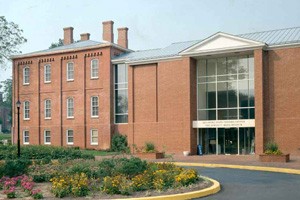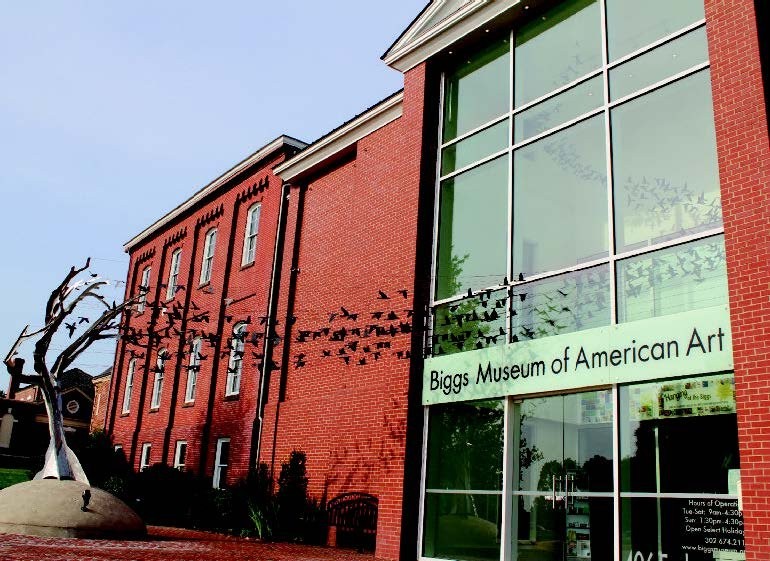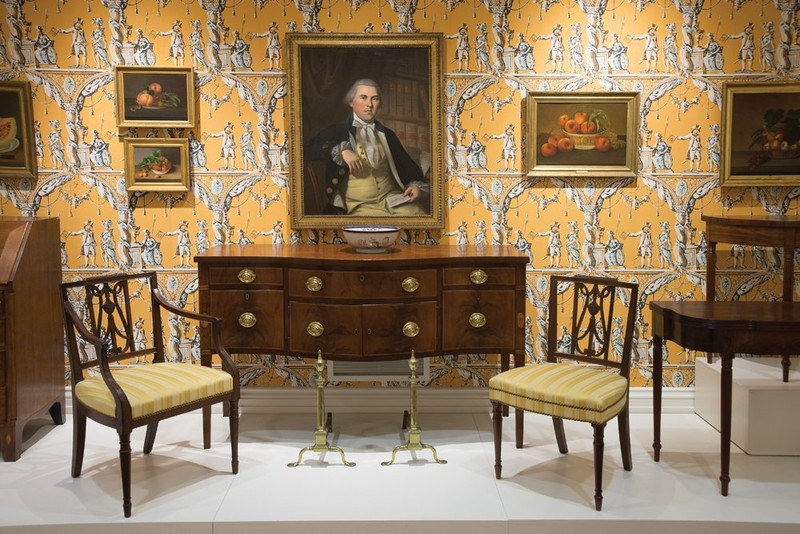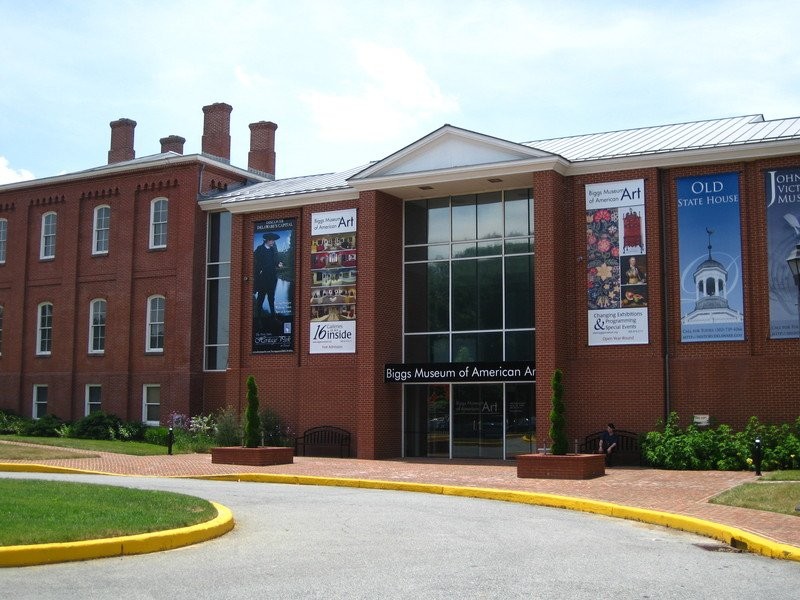Biggs Museum of American Art
Introduction
Text-to-speech Audio
Images
The museum before the renovation.

The façade of the Biggs Museum of American Art, featuring its first permanent sculptural installation, Aloft (2015), by Erica Loustau, the capstone of the museum’s 2011–2014 renovation.

The Marcia and Henry DeWitt Gallery in 2015, after the museum’s three-year renovation. Featured are works by the family of Charles Willson Peale as well as Federal furnishings from Delaware.

The museum front after the renovation.

Backstory and Context
Text-to-speech Audio
Opening its doors in 1993, The Biggs Museum of American Art quickly became one of the most important museums in Delaware. The Museum was founded to display the art collection of its founder, Sewell C. Biggs, and to delight and educate its visitors on the valuable cultural legacy of the region. The Museum displays the finest Delaware-made furniture and silver collection as well as the only painting and sculpture collection in the region able to tell the story of American representational art. The Museum’s eighteen galleries are arranged to emphasize the evolution of Mid-Atlantic fashion in the fine and decorative arts from the early 1700s to the present and to present several focus exhibitions annually. Art education is at the core of the Biggs Museum’s mission and opportunities to experience the Museum in different ways are offered throughout the year.
Sewell Biggs was Born on November 12, 1914 in Middletown, DE. Sewell’s family was economically and geographically tied to Delaware and the Mid-Atlantic Region through an illustrious history of lawyers, bankers, farmers and politicians. Among the hundreds of art objects and archival materials Sewell left to the Biggs Museum, among his earliest personal items was a bag of marbles It was often discussed that Sewell opened his first museum in his childhood bedroom where he charged visitors a nickel to see his collection of marbles, seashells, Confederate money, WWI artifacts and illustrations from American Boymagazine by Wilmington illustrator Frank Schoonover.
Biggs expanded his horizons with education, travel and real estate. After following in the family footsteps and passing the Virginia Bar exam, Sewell immersed himself in the study of architecture at Oxford and Cambridge Universities. He and his friend, Charles DuPont, spent 1937 traveling around the globe photographing the major architectural structures of many of the world’s continents. Sewell’s own photograph albums attest to his respect for the genius of each culture’s architectural heritage while also embracing the new visual vocabulary of Modern building. At the end of the War, modern architecture was heavily embraced by the new world power of America and architects like Mies Van de Rhoe, Walter Gropius, Frank Lloyd Wright, and Le Corbusier were spreading an electric influence.
At this same time, Sewell began buying and refurbishing 18th-century farmhouses throughout New Castle and Kent Counties here in Delaware. These historic settings became the first personal displays of his growing collection of Americana and, perhaps, set an influential boundary to his collecting of art forms of a particularly domestic nature. Even today, visitors of the Biggs Museum remark on the domestic mood of the gallery spaces and the collections. Sewell never collected objects from civic or professional architectural settings-he always collected to decorate his own homes and the museum continues to reflect this interest.
Since the 2003 death of its founder, the Biggs Museum continues to expand and refine its permanent collection along the path carved by Sewell C. Biggs. His interest in displaying the symbols of regional, artful spaces alongside his fine-art teaching collection is maintained in every new accession. Sewell’s life-long passions of collecting, architecture, American and regional arts, and modern-art patronage are combined and presented in the Biggs Museum. The result is a museum founded to define the artistic life of the entire State of Delaware.
The Biggs offers changing exhibitions throughout the year relating to historical and contemporary art topics. Intimate galleries offer guests an unexpected and personal experience with the collection. The museum supports the public education of art through educational programming for adults and children and special events designed to bring art to everyone.
The Biggs Museum of American Art is dedicated to promoting an understanding and appreciation of the fine and decorative arts of Delaware, the Mid-Atlantic Region and the Nation from 1700 to the present. To fulfill its mission, the museum presents a broad range of exhibitions and public programs, actively interprets and cares for its collections, serves as an education resource to the community, and maintains strong ties with artists in the region. The Biggs Museum aspires to be one of the most prominent art museums in the Mid-Atlantic region—respected and valued for its collections and programs, and admired for the diversity and commitment of its audience. It will be a leading advocate for the importance of art and creativity in education and in the daily life of the community.
Sources
http://www.biggsmuseum.org/visit.html
The History of the Biggs Museum. Biggs Museum of American
Art. Accessed February 05, 2018. http://www.biggsmuseum.org/about-us/the-history-of-the-biggs-museum/.
Mission and Vision. Biggs Museum of American Art. Accessed
February 05, 2018. http://www.biggsmuseum.org/about-us/mission-and-vision/.
